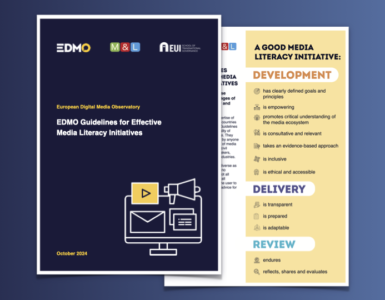by Päivi Rasi-Heikkinen, University of Lapland, Finland.
Older people’s internet nonuse and limited digital competences may both present challenges to the ongoing digitalization of society and push older people into a marginal position. The global aging phenomenon has further accelerated the discussion of older people’s position in digitalized societies: What does the position of older people in today’s digitalized society look like? How can we promote their digital inclusion?
Here, I present some answers based on my recent book, Older people in a digitalized society: From marginality to agency (Emerald Publishing, 2022). The book presents research, including case studies, from Finland, a top performer in digital public services. It looks at how researchers, older people themselves, and the media describe and explain older people’s position – the central premise being that the way we talk about older people in digitalized societies has consequences: it fashions the present and future of older people’s learning, well-being, everyday life, and participation. Therefore, we all need to be mindful of how we talk about older people, their digital competences, and their learning abilities.
Stereotypical portrayals of digital competences and learning abilities
Older people are positioned on the margins of digitalization. Media typically describe older people negatively as digitally incompetent outcasts and as a social problem requiring societal action. Older people’s abilities to learn to use new digital technologies are also stereotypically portrayed as poor. When talking about digitalization, the media and older people themselves use a rich array of metaphors, such as “behind the Digi-God’s back,” “societal outcast,” “fallen off the boat,” “fossil,” and “past the expiry date,” to point out exclusion and a marginal position.
The negative portrayal of older people does not realistically reflect their digital competences. According to research, older people’s digital competences show considerable variation. Also, inadequate skills may not always explain the nonuse of digital technologies because factors other than skills may be at play – either sociodemographic, individual, or those related to non-accessible or non-user-centered digital services.
On the margins of digitalization – a deliberate choice?
Depending on who is talking, older people’s marginality may be portrayed as either a negative phenomenon or a positive one. As older people are a highly diverse group, some older internet nonusers themselves may also describe their nonuse as positive marginality: as a deliberate and singular choice, as an act of courage and of not complying with social pressures to use digital technologies—“not going with the flow.”
It is important to acknowledge that a refusal to use the internet may be a deliberate and well-informed choicethat isnot necessarily connected to a person’s lack of digital competences. As I wrote in the book: “It is as if some older people were saying: ‘I am on the margins, and that’s where I want to be.’”
Social support networks are key to digital inclusion
Spouses, family, friends, and caregivers (formal and informal) have a central role in older people’s digital competences and their digital inclusion. Learning and then continuing to use digital technologies typically requires constant support from a user’s formal and informal support networks.
Very often, older people’s inadequate digital competences and their need for support are looked at negatively. However, social support can also be looked at from a more positive viewpoint as knowing whom to ask for help and how to do so when needed. We may all ask ourselves: Would I be able to learn to use digital technologies without any help?
How can we promote digital inclusion?
From these observations, we can glean practical implications for digital inclusion:
- Digital inclusion policies should also encompass a choice for internet nonuse, meaning that service providers should offer alternative service and information provision means besides online services.
- As older people are highly diverse in their digital competences, practical educational interventions should not offer one-size-fits-all training but instead cater to individual learning needs and preferences.
- To avoid reinforcing negative stereotypes in media audiences and to promote digital inclusion, media coverage should better reflect older people’s diversity in digital competences.
- Media coverage and digital inclusion policy and practice should better address the need to develop accessible digital services through both user-centered design and participatory design.
- Besides providing older people with accessible and user-centered digital services, service providers need to make sure that adequate, needs-based social support is available.
For older people’s inclusion in a digitalized society, cross-sector collaborations are needed from multiple societal actors. There is still much work ahead of us to achieve a society in which no older person reports being on the margins and excluded – on being “behind the Digi-God’s back.”

Author
Päivi Rasi-Heikkinen, PhD, SScD, is a professor of education at the University of Lapland’s Faculty of Education, Finland. Rasi-Heikkinen has 20 years of experience in research and development projects in the field of media education. She is an expert and a pioneer in the digital inclusion, media literacies, digital competences, and Internet nonuse of older people.














